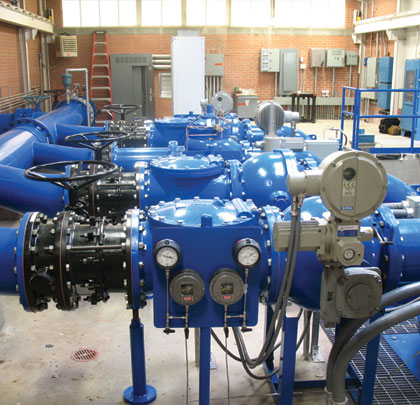Ever since they were invented, control valves have been on the move. As an integral and essential element of pumping applications, the issue of managing the performance of these valves has been the driving force behind the development of new generation actuators and actuation solutions. Pipestone equipment, which has adopted SIPOS’s Variable Speed Actuator (VSA) technology in a number of pump station installations, provides technical data and illustrations to support the following report. A supplier of municipal and industrial water products providing comprehensive support including system design, Pipestone’s services include hydraulic analyses as well as the engineering element of the plant incorporating directly linked control valves, other shut-off valves and air valves or surge tanks.
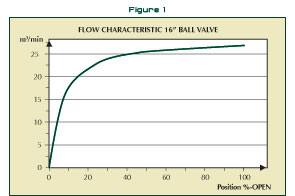
VARIABLE SPEED ACTUATORS
With a hundred year history—originally as part of the Siemens organization—SIPOS supplies both standard and Variable Speed Actuators. The company, which has been established as SIPOS Aktorik for over a decade, launched the SIPOS 5 VSA in 1998. Introducing an integrated frequency converter to valve actuation, and pairing with intelligent controls, gave SIPOS the ability to facilitate the smooth control of valves in both an open and closed loop. Additionally, functional reliability was provided, which could be monitored in the interests of efficient process operation. The product development initiative also meant that the actuator’s output speed could be changed at any time, depending on valve/process requirements.
The automation experts at Pipestone Equipment confirm that, for modern pumps, which are combined with valves to ensure controlled and reliable flow rates, minimizing the risk of pressure surges is essential, and this can be achieved by using Variable Speed Actuators. Avoiding water hammer is of particular interest, as this is a very real potential danger for plants and pipeline systems.
With their variable speed functionality directly integrated into the firmware, SIPOS’s VSAs have been identified by Pipestone as the optimum solution for minimizing, or avoiding, water hammer using intelligent control of pump or pressure compensation valves.
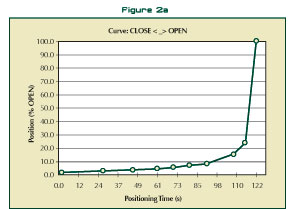
PRESSURE POINT
A key area that the VSAs have addressed is the highly damaging impact of water hammer. High pressure build up culminates in shock waves and, in the worst case scenarios, pipelines can break. Vacuum can also be created that causes pipes to collapse or implode. The topic of pressure surge reduction is, therefore, a key consideration for pump station projects and an issue that requires considerable engineering work to facilitate solutions.
SIPOS invested heavily in R&D to address the issue of “soft starting” or “caressing.” The reason that the valve needs ‘caressing’ can be explained by drawing a parallel with the motion of a lift. To avoid impact on both the lift, and the people using it, a soft start (and stop) is required. The lift should ease gently into its movement, gradually gather momentum and slow to a stop at its selected end point.
The same principle applies to water—flow needs to “caressed” to avoid the build-up and pressure peaks associated with water hammer, which have been known to rupture pipes. SIPOS’s integrated VSA frequency converter ensures that motor speed is reduced automatically in the end positions. Therefore, there are no magnification torques if the valve is blocked between the end positions. The voltage for each of the many available speed/cut-off torque combinations is pre-selected so that the cut-off torque setting corresponds to the stalling torque of the motor.
In other words, if a VSA is used, the massive current peaks experienced when the motor starts are eliminated and, even an unscheduled stop, does not result in torque damage.
The alternative to VSAs is to fit an external frequency converter: this is not an aesthetically pleasing option and, more importantly, workers on site are required to program and maintain highly complex converter software.
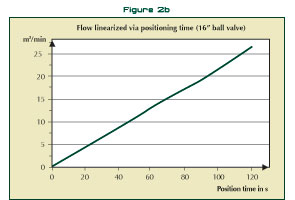
FLOW CAPACITY
Free selection of output speed is the basis of SIPOS technology. This is achieved using an integrated frequency converter for control. Intelligent software within the actuator not only controls the motor but also provides a special travel-positioning time function.
Actuators are historically selected to open or close within a specified time, which defines the output speed. Typical water industry pump control ball valves have very high flow capacities (Cv) and, when combined within a waterline, have non-linear flow capacity curves whereby relatively small opening percentages (i.e. 10 percent) result in capacities of greater than 50 percent and full flow rates can be achieved at openings in the one third range. As such, constant speed actuation only provides flow rate control over roughly the first third of the operating time. Additionally, the control provided is non-linear and is determined by the valve characteristics, not the actuator.
Ball valves have a rugged, simple design and a high volume throughput which minimizes headloss during pumping operation and saves energy cost. When the high capacity ball valve is combined with a waterline and pump station, the flow capacity of the waterline quickly becomes a limiting factor. Effective valve control is therefore essential for maximizing the benefits of ball control valves, while minimizing transients within the system.
Ideal pump station start-up and shut-down sequences would accelerate and decelerate water within the pipeline at a constant rate or linearly. Due to the complex inter-relationship between pump curve, ball valve Cv curve and pipeline configuration, achieving linear flow rate changes has been difficult to achieve over the years. However, if the rotational speed of the valve shaft during the opening and closing sequences could be varied, linearization becomes possible. With this ability, computations could be made to determine valve shaft rotational speed at various points during operation and a valve could be programmed to essentially be a linear control valve for that specific installation site. This theory applies to any type of valve or gate, any water source and any type of fluid control system.
Bridging the gap between theory and reality is the SIPOS 5 actuator. By defining up to ten value pairs (position; positioning time); the required parameters may be set directly within the actuator according to the system characteristics. Once programmed, the SIPOS actuator will operate the valve as required to achieve optimized and linearized flow rate changes. For first-time input based on manufacturer curves, use of COM-SIPOS actuator parameterization software is highly recommended. Separate operation curves for opening or closing the valve can be specified. COM-SIPOS presents the entered values on a chart enabling quick verification of figures (see figures 2a and 2b). For the operator, the result is a practical linear relation of run time and throughput (see figure 2b).
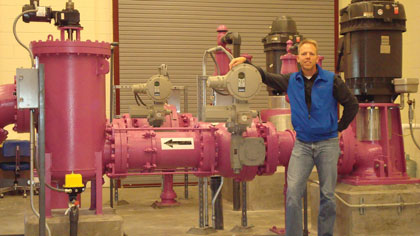
SURGE SOLUTION
Pressure surges are often caused by valves opening quickly with excessive pressure variation in front of and after the valve. Pressure peaks, due to simultaneous closing of several valves within closed systems, are also known. The flowing medium suddenly halts and kinetic energy is turned into pressure.
Another reason may be the quick start of a powerful pump. The overpressures and low pressures, also called water hammer, can be reduced by combining a pump with additional start-up control and a ball valve with a Variable Speed Actuator. Pressure relief valves and/or bladder surge vessels can also be used to aid pressure surge reduction and system attenuation.
Pump failure, e.g. in case of power failure has major impact. Pipeline breaks may also generate pressure surges and cause further damage to the entire system.
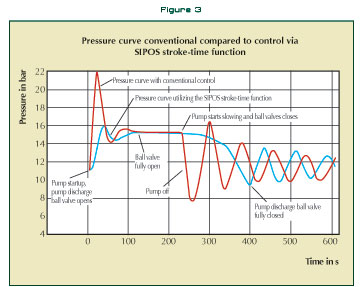
Every day, companies like Pipestone Equipment address the challenges of pressure surges and water hammer. Central competences include detailed examination of the behavior of systems which comprise pumps, shut-off valves and pipelines with water. The starting point for all considerations is often measurements and simulations, such as the pressure curve shown in red on figure 3.
The amplitude at measuring point 2 after the pump ball valve shows significant pressure surges. As an alternative, or in addition to reduced mechanical and hydraulic measures, pressure waves can also be remedied by means of intelligent control of the pump valve. The blue curve clearly shows softer pressure variations when using the SIPOS 5 travel-positioning time function.
In conclusion, SIPOS stresses the importance of controlling water hammer in pump stations and, although actuation devices look quite innocuous to most people, anyone working in the ‘front line’ dealing with the aftermath of pipe ruptures will reinforce the importance of valve control technology. The experts at Pipestone Equipment can confirm, the control of pressure surges are all important and advancements such as VSAs play a significant role in enhancing automation processes. ■
ABOUT THE AUTHOR
David Buchwald is the president of Pipestone Equipment and a member of the American Water Works Association (AWWA) and Colorado Renewable Energy Society (CRES). Steffen Koehler has worked as an international sales manager for SIPOS Aktorik for fourteen years and has extensive experience of global business and electric actuation projects/applications.
_________________________________________________________________________
MODERN PUMPING TODAY, February 2014
Did you enjoy this article?
Subscribe to the FREE Digital Edition of Modern Pumping Today Magazine!


